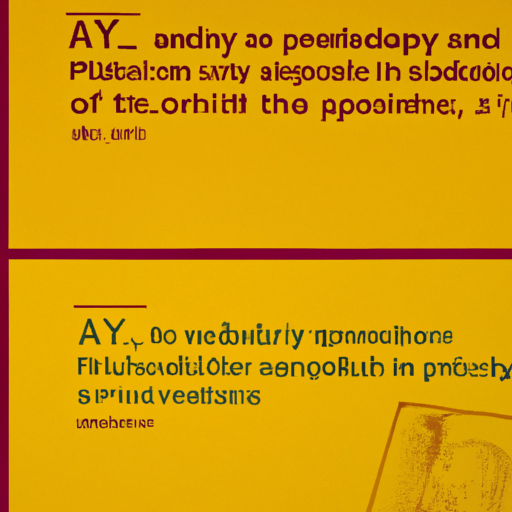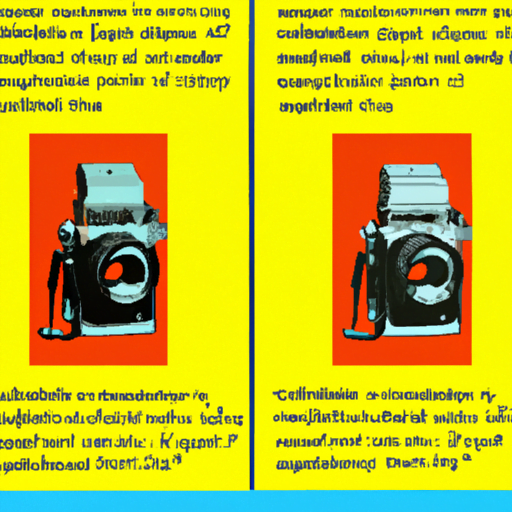
-
Table of Contents
- Legibility vs. Readability: Key Differences and Considerations
- Understanding Legibility
- Exploring Readability
- Factors to Consider for Legibility and Readability
- 1. Typeface Selection
- 2. Font Size and Spacing
- 3. Contrast and Color
- 4. Organization and Structure
- 5. Consideration for Accessibility
- Case Studies and Statistics
- Summary
Legibility vs. Readability: Key Differences and Considerations

When it comes to designing and presenting written content, legibility and readability are two crucial factors that can significantly impact the effectiveness of communication. While these terms are often used interchangeably, they have distinct meanings and considerations. In this article, we will explore the key differences between legibility and readability, and discuss the important factors to consider when creating content that is both easy to read and visually appealing.
Understanding Legibility
Legibility refers to the ease with which individual characters or letters can be recognized and distinguished from one another. It primarily focuses on the design and clarity of the typeface or font used in a piece of text. A highly legible font ensures that each character is distinct and easily recognizable, even at small sizes or in challenging reading conditions.
Legibility is particularly important in situations where the text needs to be read quickly or from a distance. For example, road signs, billboards, and packaging labels require high legibility to ensure that the information is easily understood by a wide range of people. Fonts with clear and simple letterforms, ample spacing, and appropriate stroke widths are typically considered highly legible.
Let’s consider an example to illustrate the importance of legibility. Imagine a highway sign with a complex, decorative font that is difficult to read from a distance. Drivers may struggle to decipher the information quickly, leading to potential accidents or missed exits. In this case, legibility is crucial for ensuring the safety and efficiency of communication.
Exploring Readability
Readability, on the other hand, refers to the overall ease with which a piece of text can be read and understood. It encompasses various factors beyond the design of individual characters, such as the layout, formatting, and organization of the text. Readability focuses on the overall visual presentation and structure of the content, ensuring that it is engaging, accessible, and comprehensible to the intended audience.
Readability is particularly important in longer-form content, such as books, articles, and websites, where readers are likely to spend a significant amount of time engaging with the text. It involves considerations such as font size, line spacing, paragraph length, and the use of headings, subheadings, and bullet points to break up the content and make it easier to navigate.
For instance, a well-designed website with clear headings, concise paragraphs, and appropriate use of white space enhances readability and encourages users to engage with the content. On the other hand, a cluttered and poorly organized website with small fonts and long paragraphs can be overwhelming and discourage users from reading further.
Factors to Consider for Legibility and Readability
Now that we understand the differences between legibility and readability, let’s explore some key factors to consider when creating content that is both legible and readable:
1. Typeface Selection
The choice of typeface plays a crucial role in both legibility and readability. When selecting a typeface, consider its letterforms, stroke widths, and overall design. Fonts with clear, simple, and well-defined letterforms are generally more legible. Additionally, consider the intended audience and the context in which the text will be read. For example, a playful and decorative font may be suitable for a children’s book, but not for a legal document.
2. Font Size and Spacing
The size of the font and the spacing between characters and lines significantly impact both legibility and readability. Fonts that are too small can strain the reader’s eyes, while excessive spacing can make the text appear disjointed. It is important to strike a balance between legibility and readability by choosing an appropriate font size and spacing that ensures clarity and comfort for the reader.
3. Contrast and Color
The contrast between the text and the background is crucial for legibility. High contrast ensures that the text stands out and is easily readable. Consider the color of the text and the background to ensure sufficient contrast, especially for individuals with visual impairments. Additionally, avoid using color combinations that may cause eye strain or make the text difficult to read.
4. Organization and Structure
The organization and structure of the content significantly impact readability. Use headings, subheadings, and bullet points to break up the text and make it easier to navigate. This allows readers to quickly scan the content and find the information they need. Additionally, consider the use of white space to create a visually appealing layout and prevent the text from appearing cluttered.
5. Consideration for Accessibility
Accessibility is a crucial aspect of both legibility and readability. Ensure that your content is accessible to individuals with visual impairments or other disabilities. This can be achieved by using alt text for images, providing transcripts for videos, and ensuring that the text can be resized without losing its legibility or readability.
Case Studies and Statistics
Several case studies and statistics highlight the importance of legibility and readability in various contexts:
- A study conducted by the Nielsen Norman Group found that users read only about 20% of the text on a webpage. This emphasizes the need for clear and concise content that is easy to scan and understand.
- In a study published in the Journal of Applied Ergonomics, researchers found that the legibility of road signs significantly impacts driver performance and safety. Signs with low legibility led to increased driving errors and slower response times.
- The American Printing House for the Blind states that approximately 70% of blind and visually impaired individuals are unemployed. Improving the legibility and readability of written content can contribute to greater accessibility and inclusion for individuals with visual impairments.
Summary
Legibility and readability are two essential factors to consider when creating written content. While legibility focuses on the design and clarity of individual characters, readability encompasses the overall visual presentation and structure of the content. Both factors are crucial for effective communication and ensuring that the intended audience can easily read and understand the text.
When creating content, consider factors such as typeface selection, font size and spacing, contrast and color, organization and structure, and accessibility. By paying attention to these elements, you can create content that is both visually appealing and easy to read. Remember, legibility and readability go hand in hand, and by prioritizing both, you can enhance the overall effectiveness of your communication.
